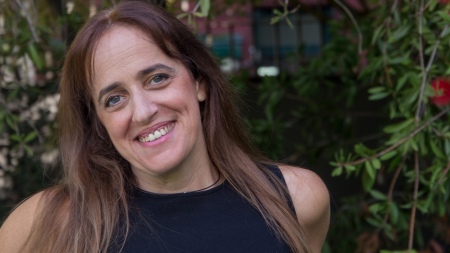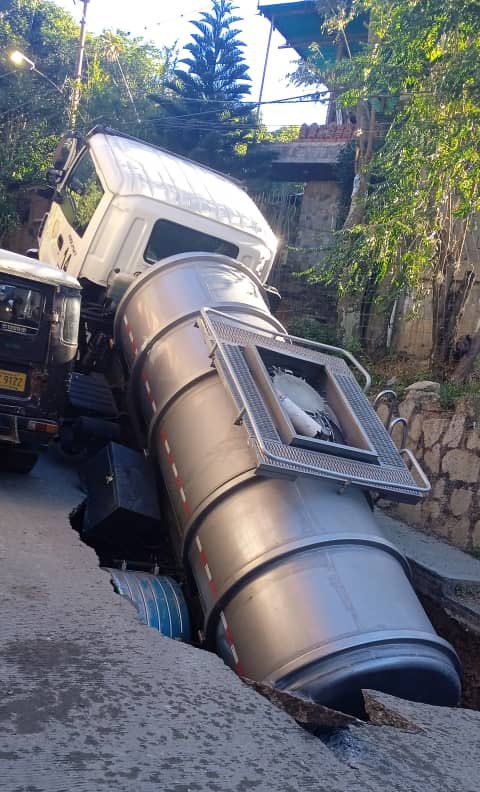In her fourth book of short stories, “Sueños como cuchillos”, the journalist Gabriela Mayer gradually moves from the fantastic to the strange within the everyday in stories with a strong narrative voice, mostly in the first person, that immerse the reader in a gallery of characters who are losing the ability to fly, feed a hatred exacerbated by the neighbor, are victims of an invasion of cockroaches or reconsider their last love partners.
On the back cover of the book edited by Milena Caserola, the writer and journalist Enzo Maqueira defines Mayer’s style as “direct, sharp, at the same time hallucinating” and relates it to “the rich tradition of Río de la Plata fantastic literature that is also crude realism and heartbreaking.”
Mayer has a degree in Social Communication. She is a journalist and wrote the storybooks “The transparent signs”, “All the blinds down” and “The past knows how to wait”. She spoke with Télam about this volume whose cover is illustrated by her niece Lucía Martínez Meyer and the contact points of journalism and literature.
-Télam: Your four books are part of the short story genre, haven’t you experimented with other formats?
-Gabriela Mayer: Only at the beginning I wrote some poetry, but later I feel formatted to write short stories. The ideas that settle in me I think of in that structure. I have come to think that it has to do with the brevity that the profession of journalist imposes on me. Or maybe I’m pretty impatient.
-T.: What are the characteristics of your prose that you take from journalism?
-GM: Many of my readings are in it. Even my own interviews that I did with questions to authors that interested me as a writer, for example about language management. But also the tools of journalism, brevity, precision, starting with something impressive. All this contributed to me when it came to building stories because, in a way, journalism and literature are the banks of the same river. One day you cross one way and another day another, but the person who writes is the same and so are the tools. It took me a while to understand that and at first I thought they were dissociated writings. Now I see that it is not so.
-T.: Although the texts that make up “Sueños como cuchillos” are stories, there are characters that move from one to another, scenarios that repeat themselves and give it a uniformity, they make up a kind of universe…
– GM: In the second part of the book I worked with childhood looks and the protagonists appear in more than one. Except for the last story where the narrator is a young man, the Bird, which comes from my previous book. He already appeared in several stories of “The past knows how to wait.” In some he was the protagonist and in others a secondary character. In his case, I feel that it is a kind of transition from my previous work. I placed the story in which he is at the end because it is a change in the female narrative voices.
I did not set out to put together that unit, but I do believe that, without intending to, a mosaic of stories emerged that can be read as if there were a line between one and the other.
-T.: Except for the story that gives the book its name, and that appears at the end, the rest are stories told from the female perspective, whether of women or girls or adolescents…
-GM: Yes. There are girls’ voices, little girls, others more grown up. But the division into two parts is clear since the first part is women who are already walking the path of adulthood.

-T.: These girl storytellers are part of a recent tradition of giving childhood a voice. I think of “La casa de los conejos” by Laura Alcoba, which recounts the dictatorship from the eyes of a girl…
-GM: Yes. There are several novels and short stories but, in reality, I never write with a predetermined plan, to subscribe to a theme or a trend. Rather, certain themes take over me and it happened that when I began to review the stories I had, I noticed that the look of childhood was one of the axes.
-T.: Most of the stories are narrated in the first person, did you work with autobiographical materials?
-GM: There is autobiographical material, but I took advantage of it to play with those memories, add images or sensations that perhaps were not there, add other characters, draw with that. At first I was somewhat afraid of venturing into the personal, but over time I learned that it is just another narrative material and, as such, modifiable and it is also the territory that is offered to one and in which one is best handled. Sometimes it adds up to get to work on an element or a universe that one knew and put it to play.
-T.: On the back cover, Enzo Maqueira writes your stories in the tradition of the fantastic from Río de la Plata. Do you feel comfortable with that label? There are stories that seem to go through terror or estrangement…
-GM: I think “estrangement” is a good word. It is still very difficult for me to define myself because it is also difficult for me to read myself. It is decidedly not terror in the way of Mariana Enriquez, perhaps an interstice between the two.
What happens to me is that the writing process itself is like an estrangement, like a stage in which one travels as something that one doesn’t really know what it is. I mean, you sit down to write, and there is something that takes over you and you don’t really know where it will take you. That’s why, sometimes, when I read them later, they surprise me.
In some of my stories, the fantastic or the strange arise from the everyday, they are not things from another world, from another planet. I like the genre that starts from the everyday, from elements and situations that seem to be common and occur in every house.
-T.: The cover illustration is a ladder, an element that is found in houses and is repeated in these stories…
-Yes. It was made by Lucía Martínez Mayer, my niece, who is 22 years old and won two awards from the National Endowment for the Arts. She proposed to me to illustrate the reason for the ladder and I found it interesting because she made me notice that they are repeated in the stories. Perhaps they could well represent the spirit of the book that also has that passage, from the bottom to the top, from the everyday to the fantastic, the gradual transition from one world to the other.

-T.: How was the writing process? Was it in the framework of a literary workshop? did you correct a lot?
-GM: In general, most of the stories come from a strong idea of a situation I experienced or something that caught my attention. I’m not one to write down in notebooks, like some writers, but the idea remains with me. Some I write in the short term, and others, a long time later because they need time to decant. Besides, I correct myself a lot, there are stories in which I changed my point of view and I had to rewrite them.
I did a writing clinic with Inés Fernández Moreno for many years and I worked on some stories with her.
-T.: It is your first book in Milena Caserola but you had been publishing your books in independent publishers. How is the experience?
GM: I’m very happy. Independent publishers have a great mystique. At Milena Caserola I felt very welcome. A publishing house becomes a house, and there one feels there, in the company of the other authors.


















